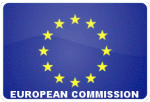 |
 |
| Menu |
| Home |
| WFD |
| CIS |
| Guidance Documents |
| Other CIS Documents |
| Legislation |
| Links |
| Flood Action Programme |
| Extras |
| FAQ |
| Contacts |
| Adobe Acrobat |
| Disclaimer |
| Default style |
| Plain style |
| Print This Page |
|
||||||||||||||||||||||||||||||||||||||||||||
Frequently Asked QuestionsWhat is the Water Framework Directive?Directive 2000/60/EC of the European Parliament and of the Council of 23 October 2000 establishing a framework for Community action in the field of water policy or the Water Framework Directive is a legislative framework to protect all water resources throughout the European Union. The overriding objective of the Directive is that all of Europes’ waterbodies achieve ‘good status’ by 2015. With ambitious objectives and clear deadlines the WFD introduces innovative elements into water policy, repealing several existing European Directives. Other elements of the Directive include:
What is the CIS and how does it work?The European Commission, Member States and Norway agreed the Common Implementation Strategy - CIS, in May 2001. It aims to support the implementation of the WFD and develop a common understanding and guidance on key elements of the Directive. Experts from the Member States, Norway and Candidate countries alongside stakeholders and non-governmental organisations are all involved in the CIS. The activities of the CIS include raising awareness and act as an exchange information, develop guidance documents on technical issues affecting the WFD, perform integrated testing in pilot river basins and develop a European information management system. These initiatives are achieved through working groups and joint activities, which are overseen by the Strategic Co-ordination Group (SCG). The Working Groups report directly to the Water Directors of the European Union, Norway, Switzerland, the Candidate Countries and the Commissions. Who are the Water Directors and what do they do?The Water Directors are the representatives of the Member States’ and other countries administrators with overall responsibility on water policy. Since 2000, regular meetings between the Water Directors are held twice a year, which are chaired by the Member State holding the Presidency of the European Union. Participating countries currently include Member States, Accession Countries, Candidate Countries, the countries of the European Free Trade Agreement (EFTA), the European Commission and the European Environment Agency. It was the Water Directors who initiated and directed the CIS and continue to monitor its progress, through the agreement of work programmes of joint activities. The Water Directors discuss all areas of relevance to European and international water policy as well as the Water Framework Directive. What is the DG Environment?The main role of the Directorate General – Environment is to initiate and define new and environmental legislation, ensuring that measures that have been agreed, are put into practice in the Member States. The DG-Environment is based in Brussels and is one of 36 Directorates-General in the European Commission. The DG Environment WFD team sits within the DG Environment’s Water Unit that work on the implementation of the Directive. The remit of this group is to ensure that the CIS Work Programme is completed satisfactorily and that the requirements of the WFD are being met. The team undertake a number of activities:
What is CIRCA?CIRCA is a software tool developed under the European Commission and stands for ‘Communication Information Resource Centre Administrator’. The WFD CIRCA Interest Group ‘Implementing the Water Framework Directive’ is the main tool for exchanging information under the CIS. The initial use of CIRCA was to facilitate the different groups under the Strategy, the increase in interest lead to the expansion of access to CIRCA. There are over 1000 members, as well as a publicly non-password accessible part of CIRCA, which contain useful documents such as Guidance and Technical Documents. What is the WFD replacing?The Water Framework Directive is a comprehensive legislative document, and takes into account areas of water policy already covered by European legislation. The following are to be repealed with effect from seven years after the entry into force of the Directive:
The following shall be repealed with effect 13 years after the date of entry into force of the Directive:
The following transitional provisions apply for the Directive 76/464/EEC:
|
| Year | Issue | Reference |
|---|---|---|
| 2000 | Directive entered into force | Art. 25 |
| 2003 | Transposition in national legislation | Art.23 |
| |
Identification of River Basin Districts and Authorities | Art.3 |
| 2004 |
Characterisation of river basin: pressures, impacts and economic analysis |
Art. 5 |
| 2006 | Establishment of monitoring network | Art.8 |
| |
Start public consultation (at the latest) | Art.14 |
| 2008 | Present draft river basin management plan | Art.13 |
| 2009 | Adoption of river basin management plan including programme of measures | Art.13 & 11 |
| 2010 | Introduce pricing policies | Art.9 |
| 2012 | Make operational programmes of measures | Art.11 |
| 2015 | Meet environmental objectives | Art.4 |
| 2021 | Second management cycle ends | Art.4 & 13 |
| 2027 | Third management cycle ends. | Art.4 & 13 |
